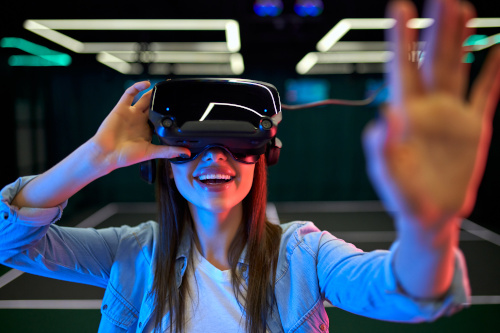
We all know that augmented reality (AR) and virtual reality (VR) are super fun, but AR and VR tools can also be incredibly powerful when integrated into classroom learning.
What’s the difference? AR is the idea that the user brings something into their real world and using a device to see something that isn’t actually there–animation or 3D images come into the real world. VR immerses a person in the experience, as if they’re actually there.
AR and VR tools have a number of benefits for students, and because the tools are engaging, students are more likely to absorb classroom lessons and concepts. Plus, students are engaged in active learning with AR and VR tools.
Here’s a handful of fun and engaging AR and VR tools to get you started:
3DBear AR: This app combines immersive technologies and inspiring pedagogic content for the optimal learning results. Strategies include AR, VR, 360-photos, scanning, and 3D printing. Most of the app’s features are free.
Avanti’s World: Avanti’s World is the world’s first educational VR “theme park.” Created by Avantis Education, Avanti’s World offers an immersive and engaging educational experience where students can walk with dinosaurs, visit ancient civilizations, journey to distant planets, and experience other impossible adventures all from the safety of a ClassVR headset or a web browser. Avanti’s World is divided into four different “lands” — “Trip Through Time Land,” “Super Science Land,” Engaging Earth Land,” and “Literacy Land,” with hundreds of scenes to explore. It includes reporting and assessment tools for teachers and a comprehensive set of educational resources for each land. Students can engage in a guided lesson, learn in groups, or explore Avanti’s World independently.
Catchy Words AR: This word game was made specifically with augmented reality in mind and has been used for students with dyslexia. Students have an immersive experience without touching the screen as they walk around, catch the letters with their device, and solve the word.

